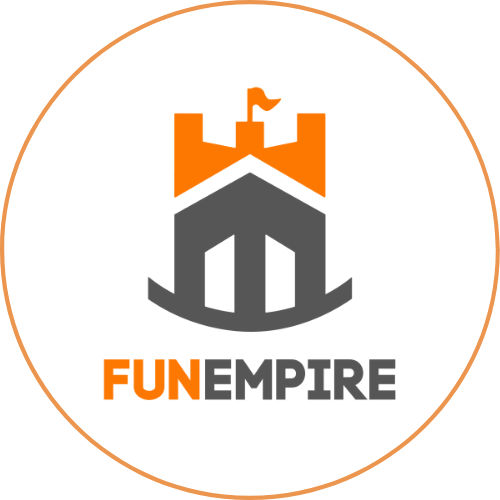Cross Functional Team Building Singapore

Cross-functional teams are a key feature of modern businesses that wish to harness multiple perspectives and skills to innovate and remain efficient.
This way of working is particularly important in Singapore, where the business environment is fiercely competitive and multi-faceted.
In this guide, we will explore how businesses in Singapore can create cross functional teams, and develop best practices to ensure team building among the members for maximum impact.
What is a Cross-Functional Team?
A cross-functional team is made up of members of different departments or specialisms working together to achieve the same goal.
The main benefit of this structure is that it allows different individuals and skillsets to explore and work on solutions in a more creative manner, which often helps to resolve issues faster.
In a fast-paced market like Singapore’s, cross-functional teams can benefit organisations because they allow them to quickly identify and adapt to new opportunities.
The Composition of Cross-Functional Teams
Types of Cross-Functional Teams
Singapore’s cross-functional teams can exist in an array of shapes and sizes, some even designed for a temporary project with a limited end date. Others might be more permanent additions to the company’s core operational strategy.
Types include:
- Temporary project teams
- Long-term innovation teams
- Executive-level strategy groups
Each bringing together a diverse mix of skills and perspectives.
Essential Roles and Diversity in Team Composition
Effective cross functional teams have diversity, not only in terms of professional and departmental but also cultural and cognitive differences. This kind of differences can lead to deeper insight and innovation. Usually, the key roles include a project manager, a team leader (who may be the project manager), members from finance, marketing, IT, human resources and other relevant departments.
Inclusion of Remote Team Members
With Singapore’s position as a global hub, many teams include remote members from across the region or globe. Managing these teams requires effective communication tools and strategies to ensure that all members feel included and engaged, regardless of their physical location.
Benefits of Cross-Functional Teams
The use of cross-functional teams comes with a range of benefits that can greatly enhance an organisation’s productivity and innovative spirit. These include the following:
- Enhanced Problem-Solving Skills: Different skill sets and perspectives can give cross-functional teams varying angles on a problem or solution, activating new and creative ways to solve them.
- Greater Innovation: A blending of skills and viewpoints enhances creative thinking so that organisations can develop products, services and processes that stand out from competitors.
- Better communication and collaboration: Improve communication skills and collaboration between departments eradicates silos and improve inter-departmental relations.
- Shorter time to completion: With members from those relevant departments involved, decisions made quicker and less complex, all factors that would reduce time to completion.
- Increased Flexibility and Adaptability: Cross-functional teams tend to be more agile in quickly adapting to market changes and shifting their strategy, given the breadth of skills and knowledge in the team.
- Higher Employee Engagement and Team Morale: Being involved in cross-functional teams forces people to learn and grow, and to develop new skills, something that can be quite rewarding to them.
- Wider Organisational Goals: Team members gain a more holistic view of what happens within the organisation, improving alignment with the company’s vision and strategy.
Challenges and Solutions
Common Obstacles
Cross-functional teams bring with them many benefits – but also significant challenges. These include the danger of conflicting departmental goals, vague definitions of roles, competing cultures of work, and lack of clear lines of authority. Such challenges are especially acute in Singapore, where the culture – with its respect for hierarchy and the cultural differences among various Asian countries – might make collaboration more difficult.
Strategies to Overcome These Challenges
Some of the more effective strategies involve developing communication protocols and regular corporate team building activities that reinforce goal congruence and mutual respect, and ensuring clear role definition through leadership team bonding activities which clearly communicate role responsibilities and the relationship of those roles to team objectives.
Building a Cross-Functional Team
Steps to Effectively Form a Cross-Functional Team
- Remember the Objective: What is the specific goal or project result that the cross-functional team is to achieve?
- Choose the Team Members: Pick people from different departments who have the necessary tactical capabilities and background information to make meaningful contributions to the team’s goal.
- Assign roles and responsibilities: Ensure everyone knows their individual responsibilities on the team and avoid duplication of effort.
- Define Leadership: Choose a person to be the leader or project manager. This individual must have the authority and ability to guide the team into achieving its goals.
- Set Up Communication Channels: Create a reliable set of communication tools and methodologies that make it easier for team members, including those who work remotely, to interact.
- Create a Charter or Mission Statement: Deliver a document that delineates the objectives, outcomes and strategies of the team to provide them with direction and motivation.
- Organise Kick-off: Meet to introduce participants, discuss overall goals, and formulate initial plans and expectations.
- Schedule Regular Check-ins: Have regular meetings to keep tabs on progress, handle problems and keep the team focused on its mission.
- Cultivate a Culture of Collaboration: Promote an ethos of open communication, respect, and inclusion to foster teamwork and creativity.
- Monitor and Pivot: Anticipate the team performance and team dynamics, and make changes to roles, processes or goals if the team is not performing or operating as required.
Tools and Technologies for Enhancement
Technology is a vital factor for running cross-functional teams in Singapore. The use of advance project management tools such as Asana or Trello is necessary to track progress of projects.
For better communication, team managers could use a communication tool such as Slack or Microsoft Teams to facilitate constant dialogue. We believe that a director or important member of a team coming in person to team meetings is vital for the entire team.
As Singapore is a multiethnic city, I believe it is equally important to meet the team members and understand the team’s dynamics is paramount. I strongly feel that video conferencing tools like Zoom or Google Meet is not a substitute for face-to-face meetings.
Best Practices for Managing Cross-Functional Teams
Leadership is a critical enabler for cross-functional teams. Leaders should position themselves as facilitators, encouraging people to talk to each other so that they are on the same page, yet staying focused on the delivery of the end-to-end customer experience.
Team members should also be encouraged and given opportunities for training and professional development to attain the necessary skills for cross-functional collaboration.
Cross Functional Team Building Singapore
Cross-functional teams is a great solution for the organisation in Singapore to stay ahead of the global competitors, by effectively harnessing the various talents and perspectives of the team members, companies can innovate and also cut costs to stay ahead of the competition, thus being the key to the long term success.
Check out some of our other related articles and guides below:
- Best Team Building Activities In Singapore (2025)
- Best Corporate Workshops in Singapore (2025)
- Ultimate Guide for Corporate Events in Singapore (2025)
- Team Building Benefits That Transform Company Culture in Singapore (2025)
- Best Effective Team Management Strategies in Singapore (2025)
- Best Team Building Skills in Singapore for Effective Performance (2025)
- Ultimate Manager’s Playbook For Team Building in Singapore (2025)
- Best Proven Team Building Strategies in Singapore (2025)
- Best Strategies for Building Team Spirit in Singapore (2025)
Frequently Asked Questions (FAQ)
If you have any questions about cross-functional team building in Singapore, you can refer to the frequently asked questions (FAQ) about the Cross-Functional Team Building in Singapore below:
What is cross-functional team building?
Cross-functional team building: creating teams that pull in members from across an organisation to work on a shared goal should tap into varied expertise and viewpoints from across the business to break down silos, bring people together and inspire innovation.
Why are cross-functional teams important in Singapore?
To remain competitive in the positive work environment of Singapore, cross-functional teams are essential with regard to the adaptability and innovation they deliver. They contribute to an organisation’s collaborative culture in Singapore, allowing for quick responses to changes in the market and enhancing the speed of product improvement through the integration of different skill sets and points of views. A vibrant mix of cultures with an equal division of gender is also beneficial for startups and innovation, which Singapore enfolds.
Can cross-functional teams include members from different geographical locations?
Absolutely, sometimes cross-functional teams comprise members from different geographical areas. This is particularly relevant in some global business centres, such as Singapore, where global perspectives and insights could be beneficial to the team members. For instance, companies that have multiple markets overseas can find such diffused teams advantageous. In general, corporate teams would benefit from effective usage of communication and collaboration technologies.
What are the benefits of a team building event for cross-functional cooperation?
It is clear that organising a events on teamwork improves a team work actively within a organization, since it encourages to interact positively among team members from different departments. If member of a teams participate in games which aim to develop the team work, they will make good relations and silos will be broken easily. This will lead the members of an organisation to work with integrity and effectively. As a result of these changes in the organization, member of a team will feel job satisfaction and work very hard. As they feel they can trust others and develop better relations with them. Additionally, employees from different departments got to know much better when jointly participate to near out the events. So the team members had developed very strong relationships between themselves.
How do outdoor team building activities impact team bonding?
Outdoors team building activities are the fresh approach to thrilling outdoor activity in a dynamic and funny way which is different to the office work and gives the possibility for team bonding in an interactive and active way. Whether it is physical fitness course or funny game or a creative thinking task, such activities require the members to trust in each other and share their ideas to brainstorm to get the best results. This raises the existing bonds and also creates more while the team bonding activity will add something special to the team spirit and ability to work together for good.
Can team building ideas like board games contribute to team bonding?
Yes, it would be a good idea for the team to use board games as a team bonding exercise, as playing together certainly encourages bonding between your work colleagues, while at the same time challenging them to think more about how to develop their own strategy, what moves the opposition may make, and how they can all work together in order to achieve the aim of the game, as is the case with new projects in the workplace. In this regard, a board game-based team building activity would be a fun, harmless way for team members to get to know each other, laugh, and so bond together as a team, all while still being in a work environment.







